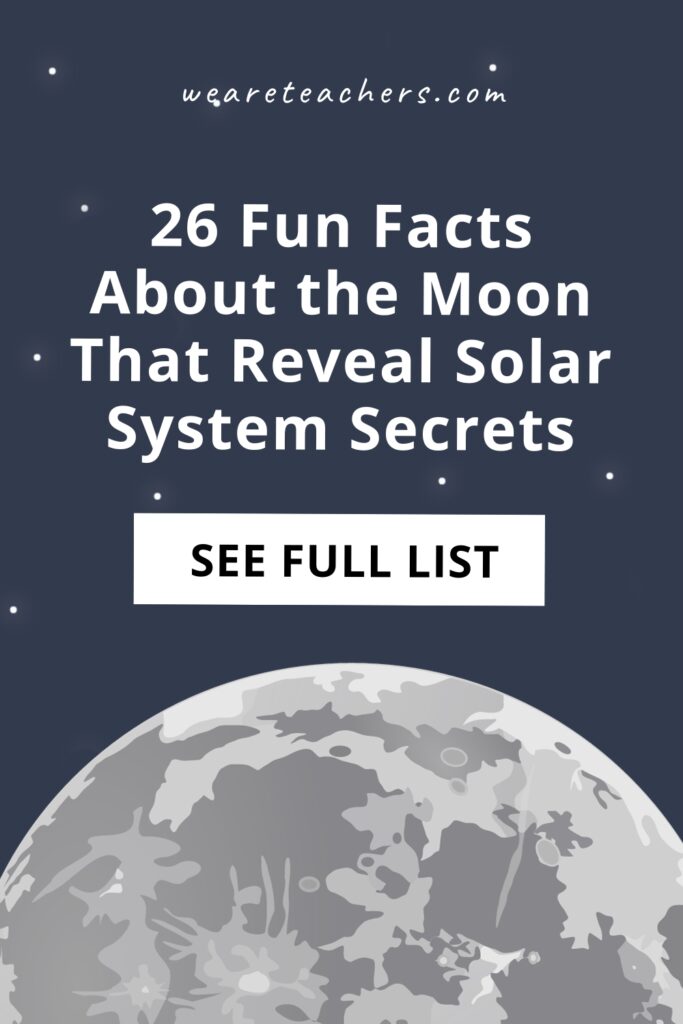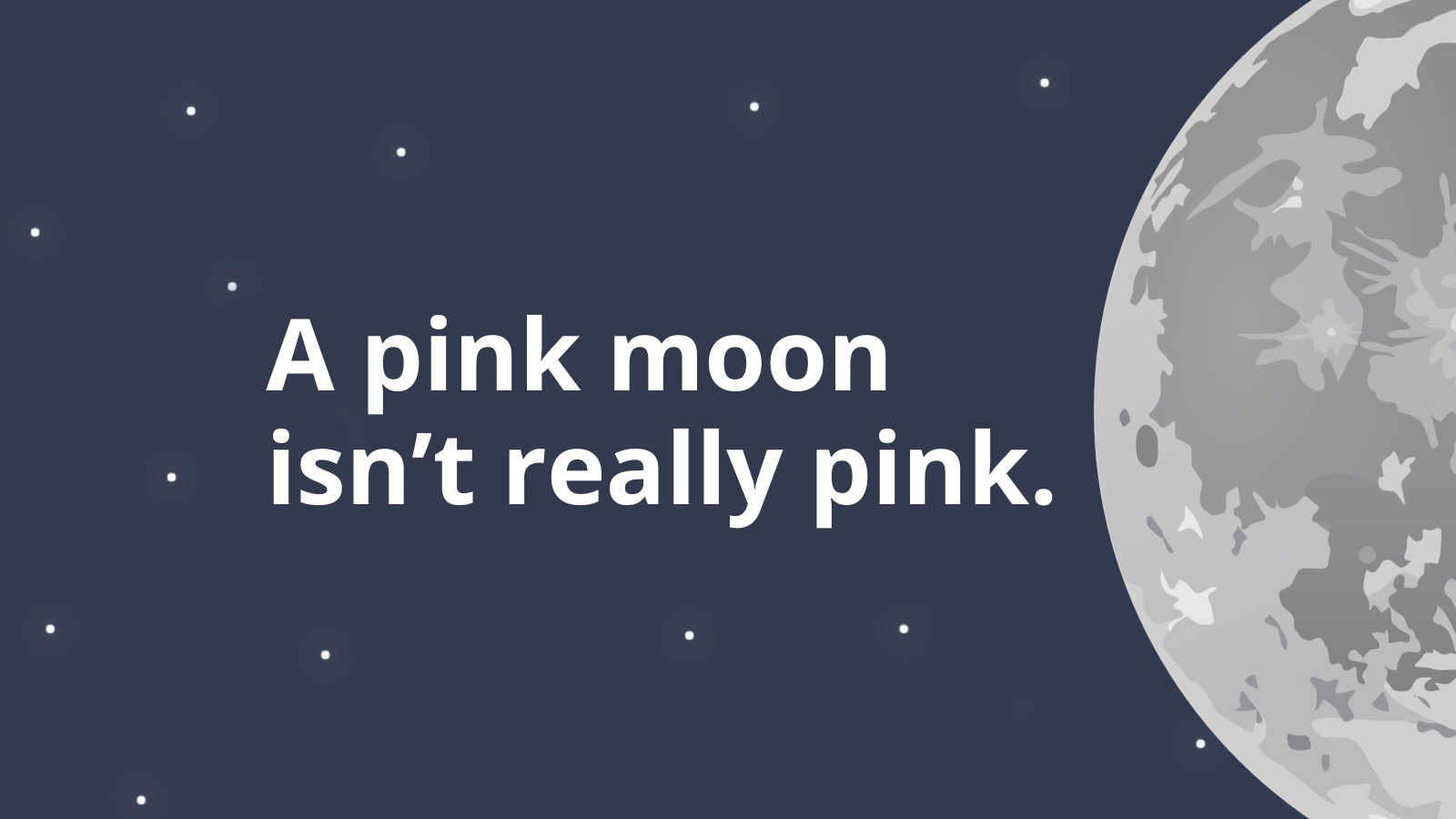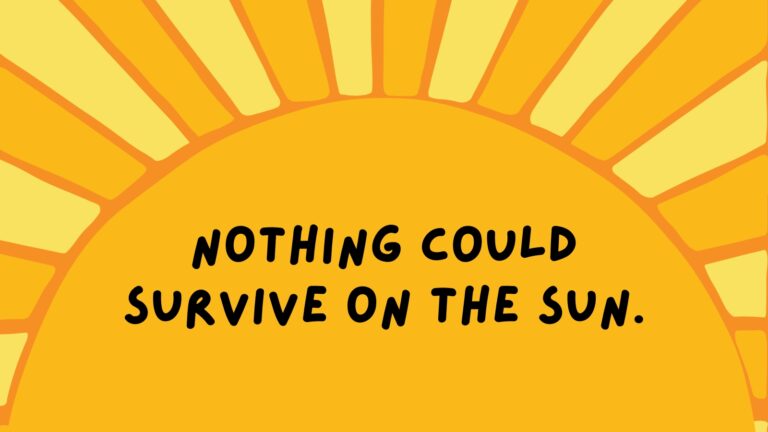The moon is a magnificent object in the night sky and an important part of our solar system. As the sun sets, the moonrise signifies the end of the day, helping us ease into the evening. The moon often leads to a sense of calmness, bringing sweet dreams as our heads rest on our pillows. It can also signify excitement and mystery, especially when a full moon shines bright in the sky. Here are some marvelous facts about the moon to share in the classroom.
Our Favorite Facts About the Moon
The moon is Earth’s only natural satellite.
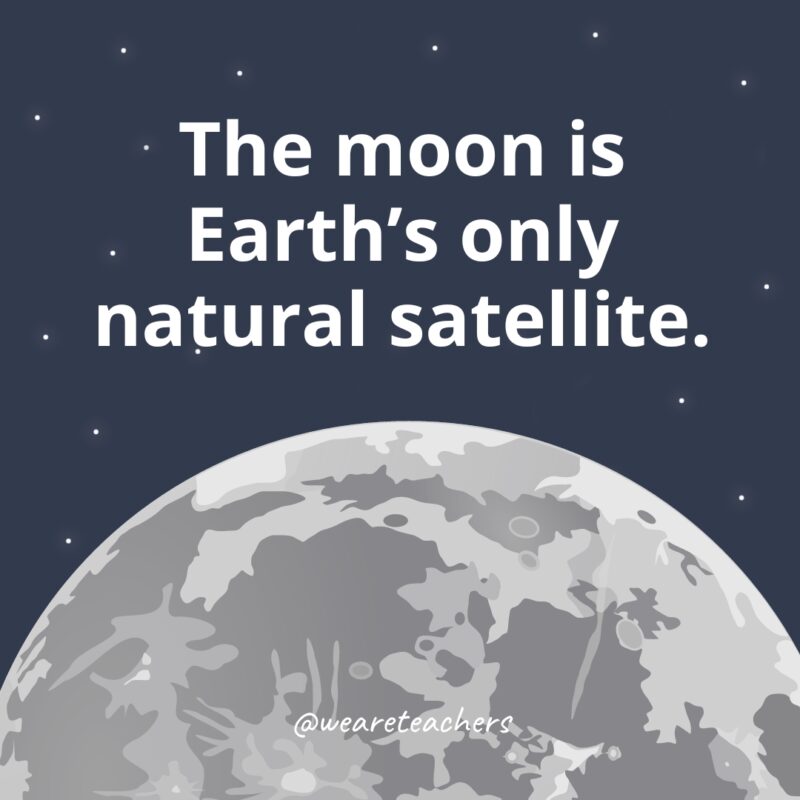
A satellite is an object in space that orbits around another object. The moon circles around the Earth, making it our closest neighbor. Learn more facts about the moon in this video.
The moon is the fifth-largest satellite in the solar system.
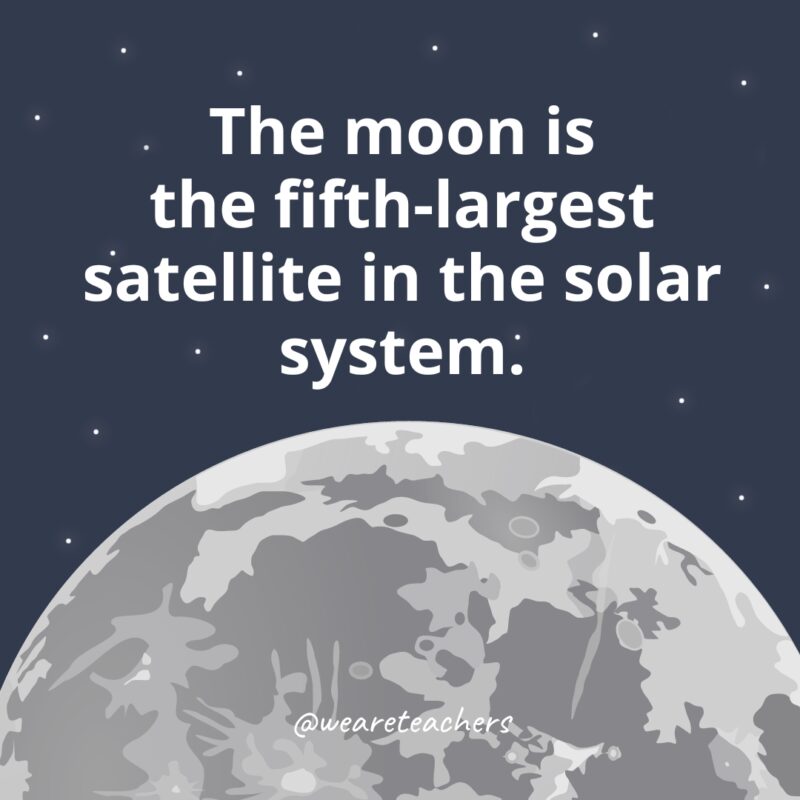
It is one-fourth the size of the Earth.
It takes 27.3 days for the moon to make one full trip around the Earth.
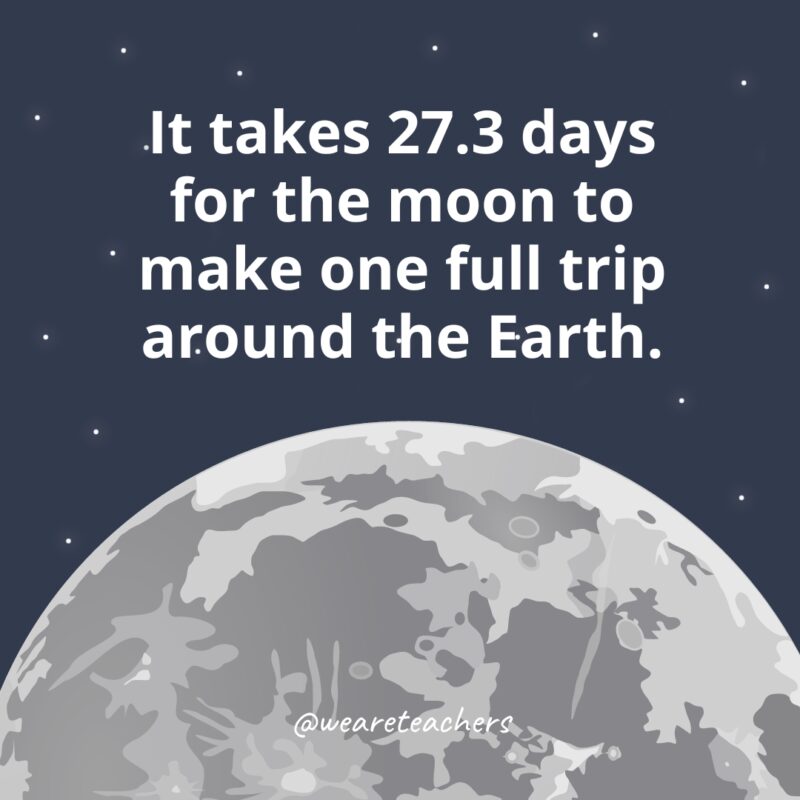
The length of each moon cycle is a little longer, at 29.5 days.
The moon has eight phases in each cycle.
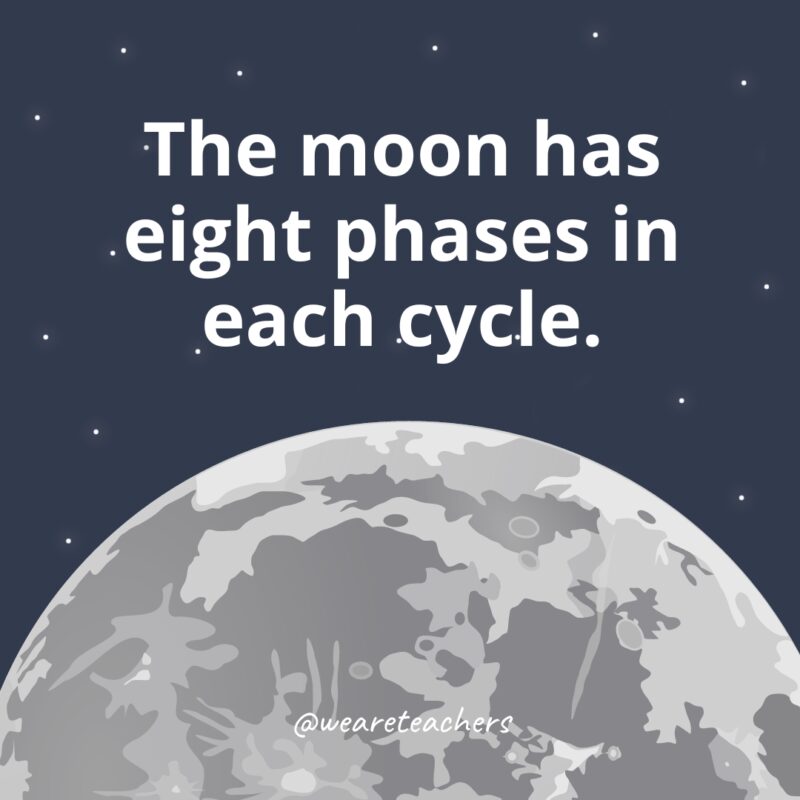
These phases are as follows: new moon, waxing crescent, first quarter, waxing gibbous, full moon, waning gibbous, last quarter, and waning crescent. Watch this video to learn more facts about the moon phases.
A waxing moon appears to grow bigger each night.
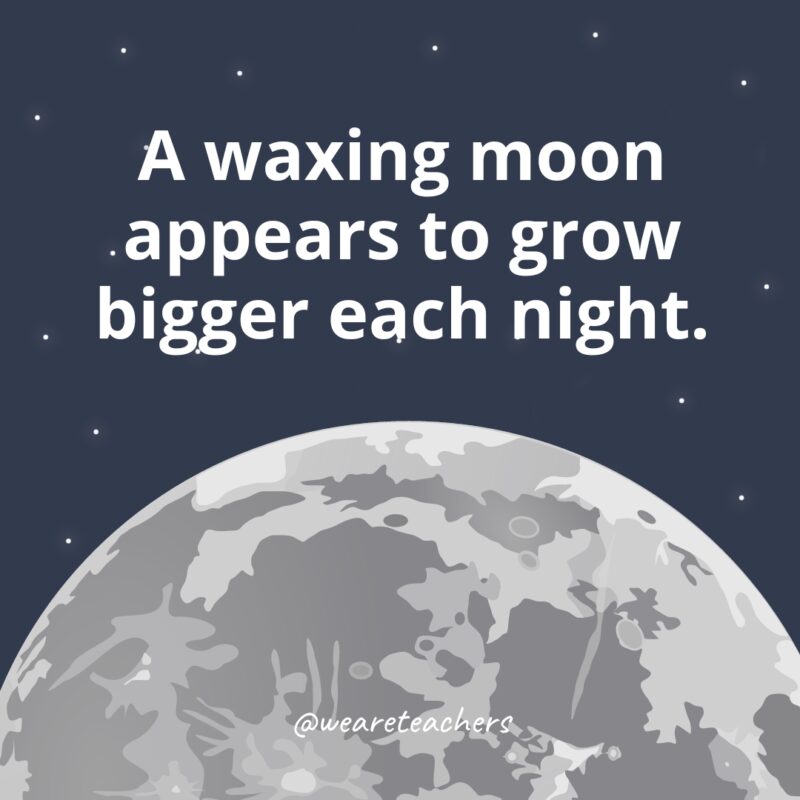
A waning moon is the exact opposite; it looks smaller and smaller.
Even though the moon appears to change shape each night, it actually always stays the same!
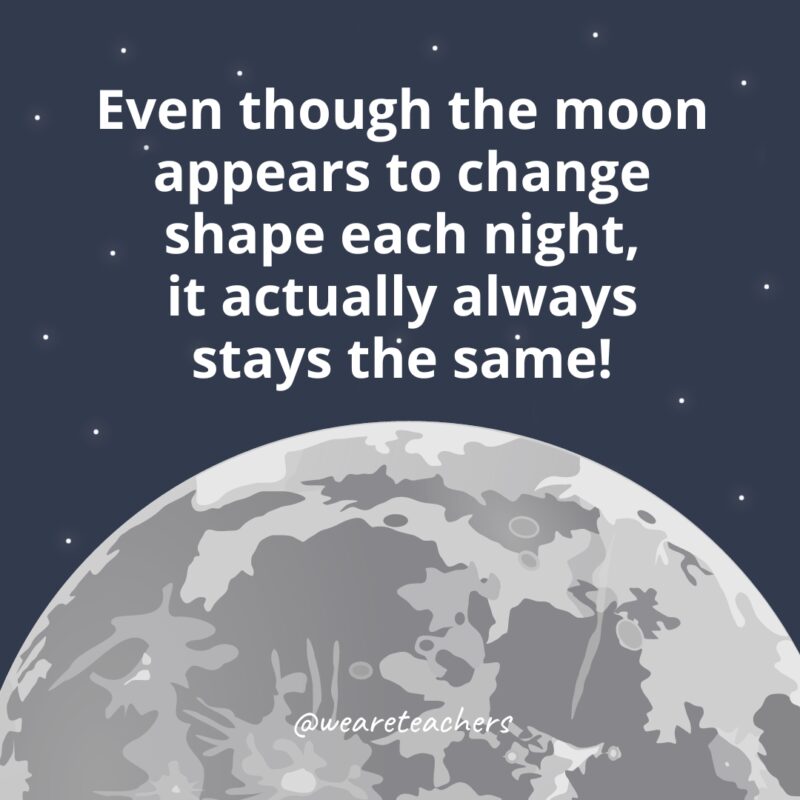
The sun lights up different parts of the moon as it orbits the Earth, changing the way we see it, as shown in this video.
The moon is a dark place without any light of its own.
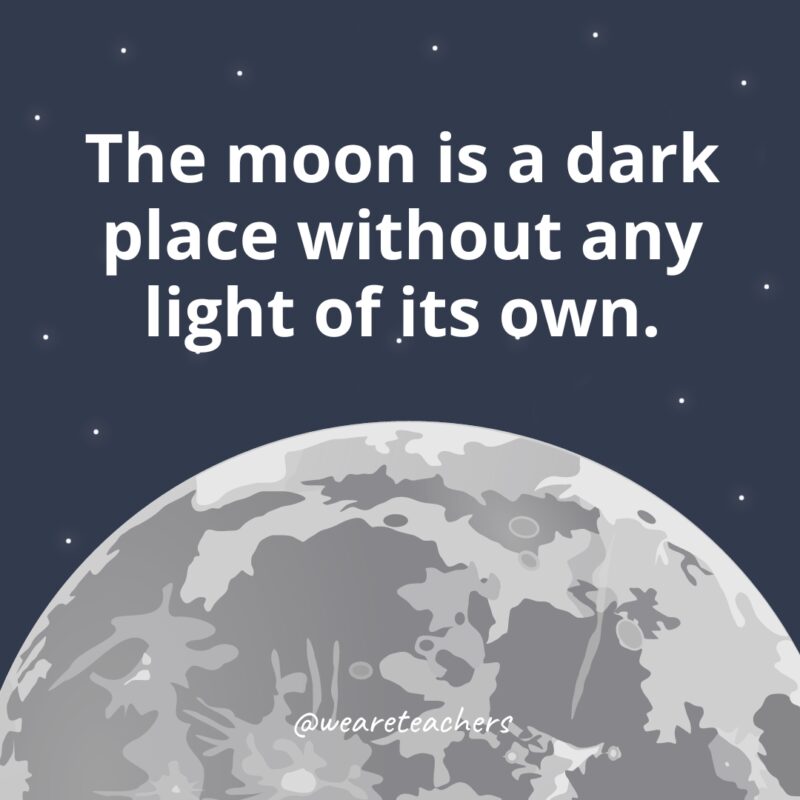
The sun reflects on the moon’s surface, creating the beautiful light we see in the night sky. Think of the sun as the moon’s light bulb.
The moon is the second-brightest object in the sky.
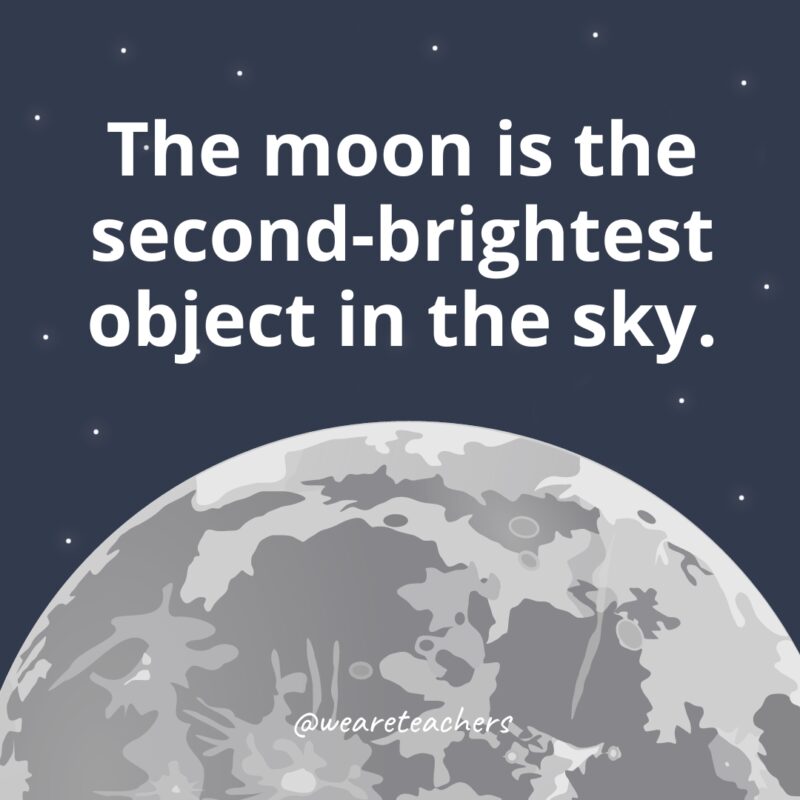
The sun is the brightest of all!
The sun is 400 times larger than the moon.
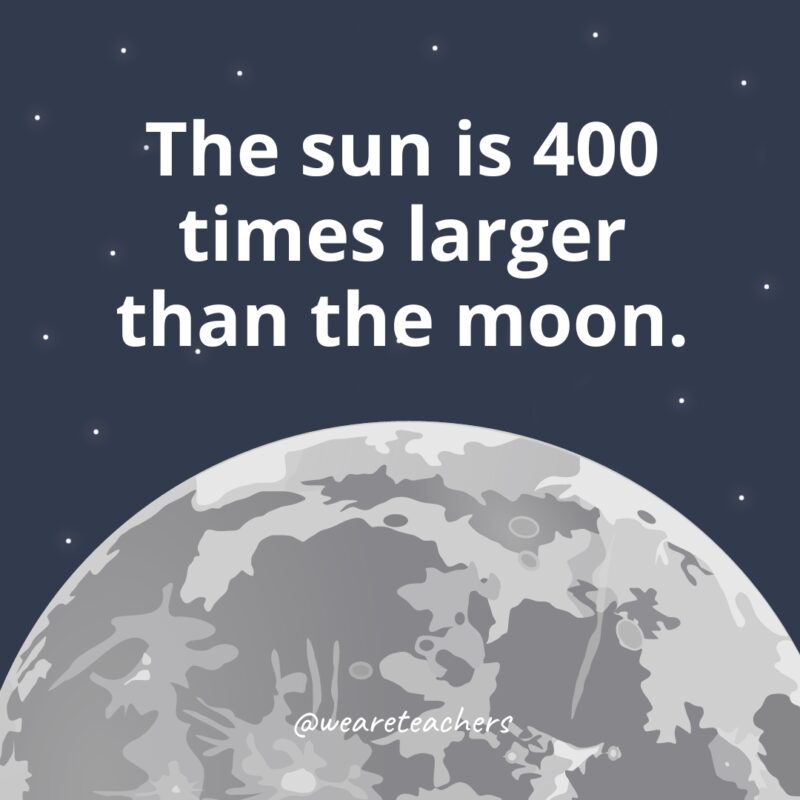
However, the moon is 400 times closer to the Earth than the sun.
The moon formed approximately 4.5 billion years ago.
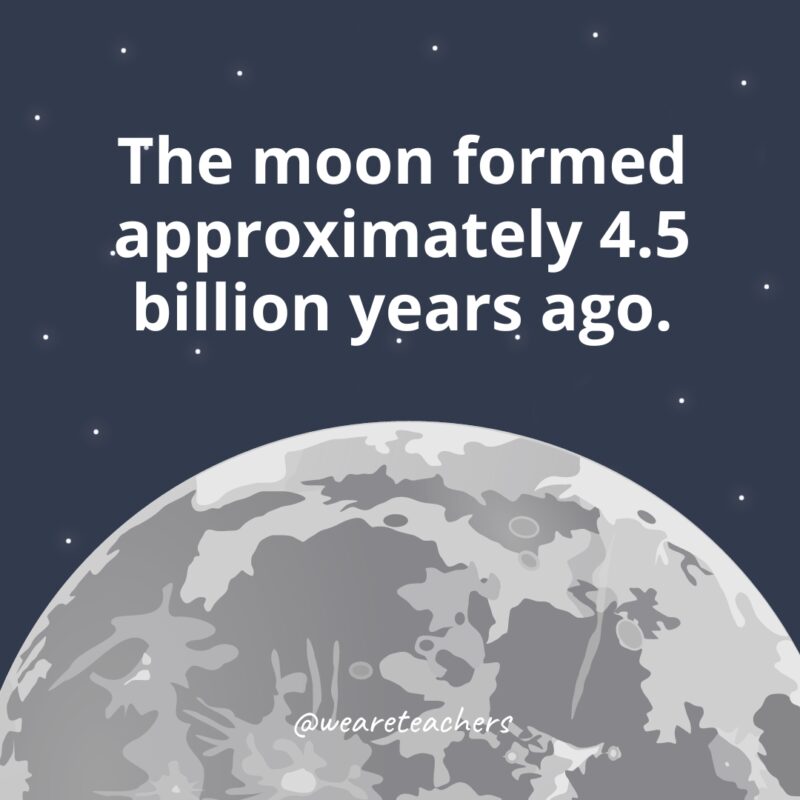
Some scientists believe it formed after the Earth crashed into a huge rock called Theia, which was the size of Mars. Nobody really knows for sure, adding to the moon’s mysterious ways!
A solar eclipse takes place when the moon makes its way between the Earth and the sun.
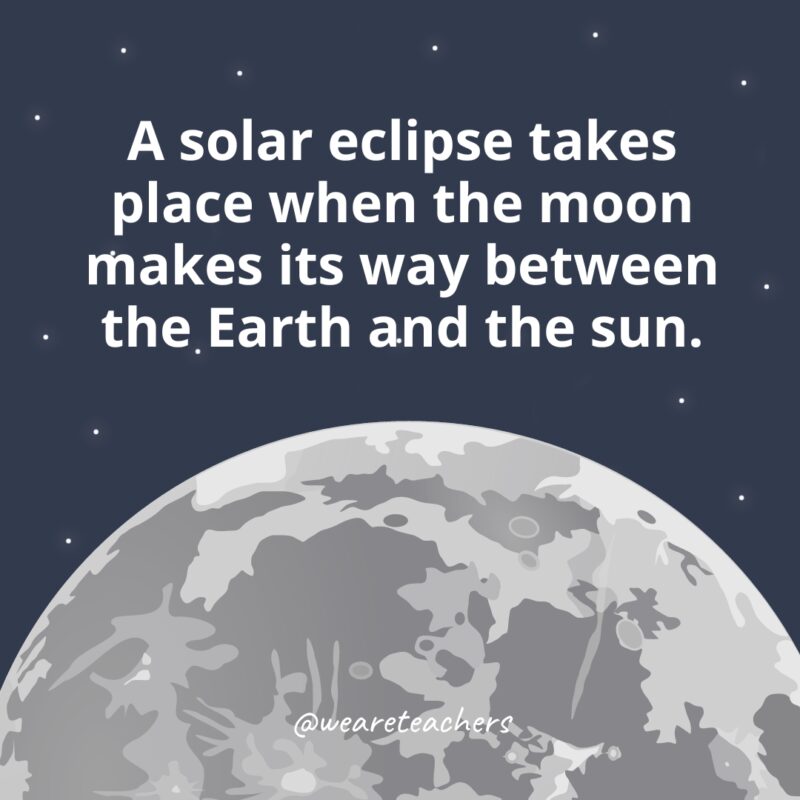
This rare event takes place during the day, obscuring the appearance of the sun.
A lunar eclipse occurs at night when the Earth moves in between the moon and the sun.
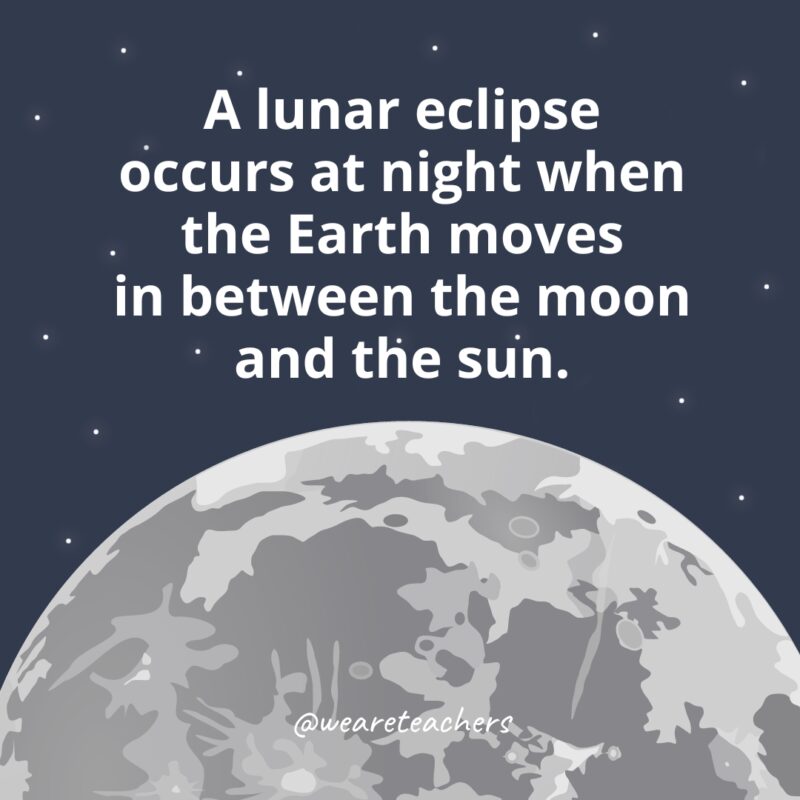
This places the moon in the Earth’s shadow, which makes a shade, blocking the light.
The moon is mostly made up of solid igneous rock.
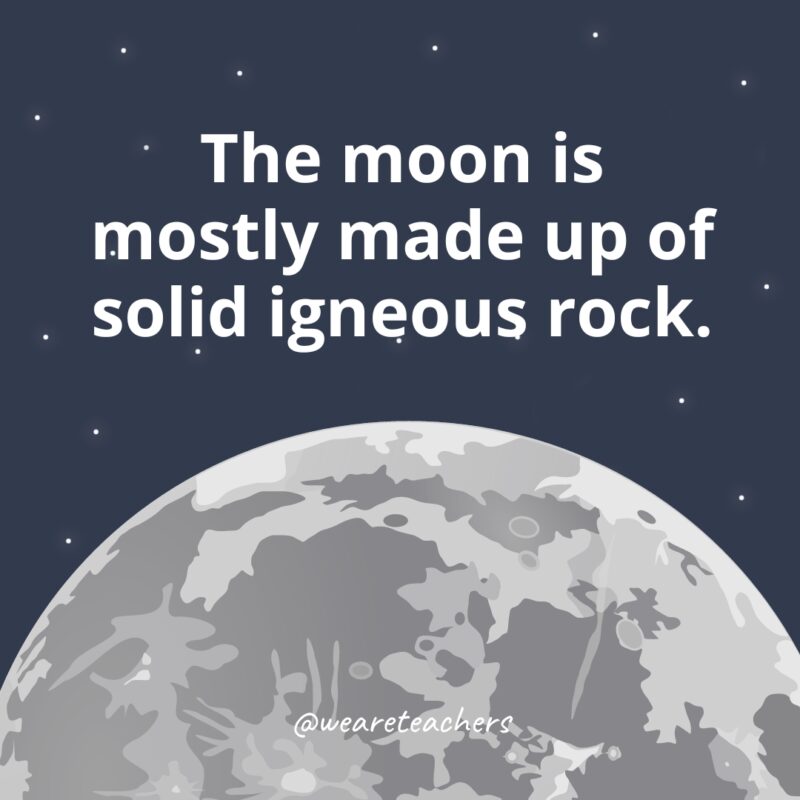
This rock contains similar materials as those found on Earth. It may look like a ball of cheese at times, but that is a tall tale!
The moon has a number of landforms, including mountains, valleys, inactive volcanoes, and plains.
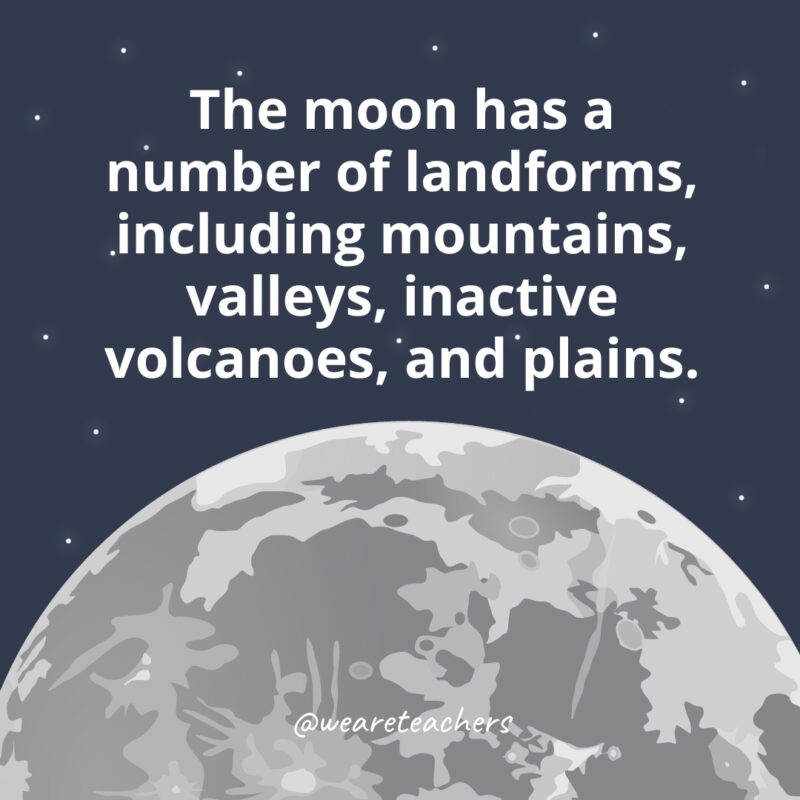
It also has lots of craters, which are giant holes on the surface.
We cannot breathe on the moon.
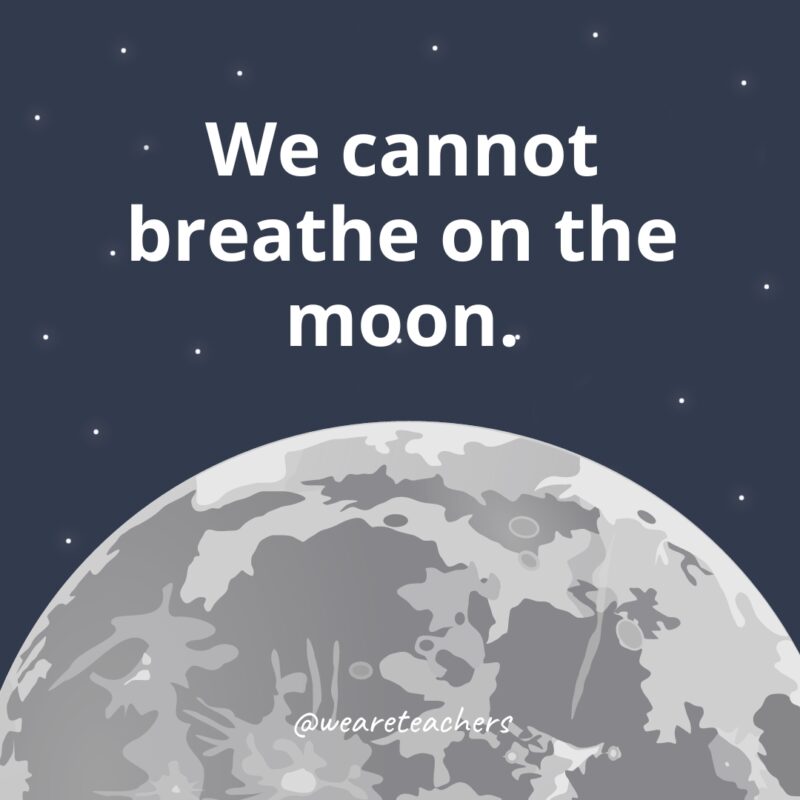
Its atmosphere consists of a thin region called the exosphere, where there is no oxygen. BYOS (Bring Your Own Spacesuit) if you plan to visit!
The moon controls the ocean tides on Earth.
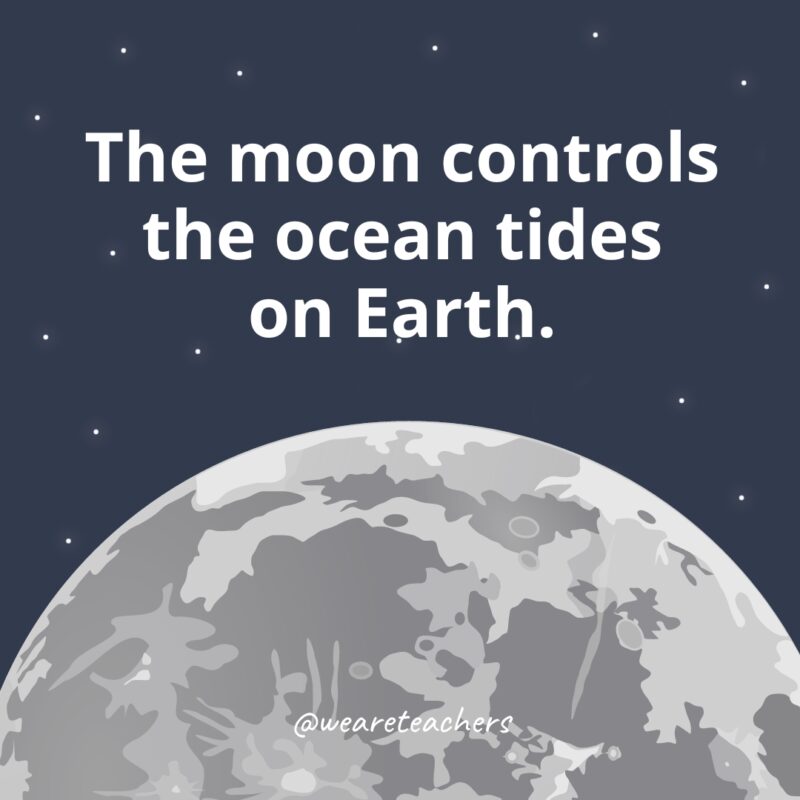
The moon’s gravity pulls on the Earth, causing the waves we see when we are at the beach.
On July 20, 1969, Neil Armstrong and Edwin “Buzz” Aldrin became the first astronauts to walk on the moon.
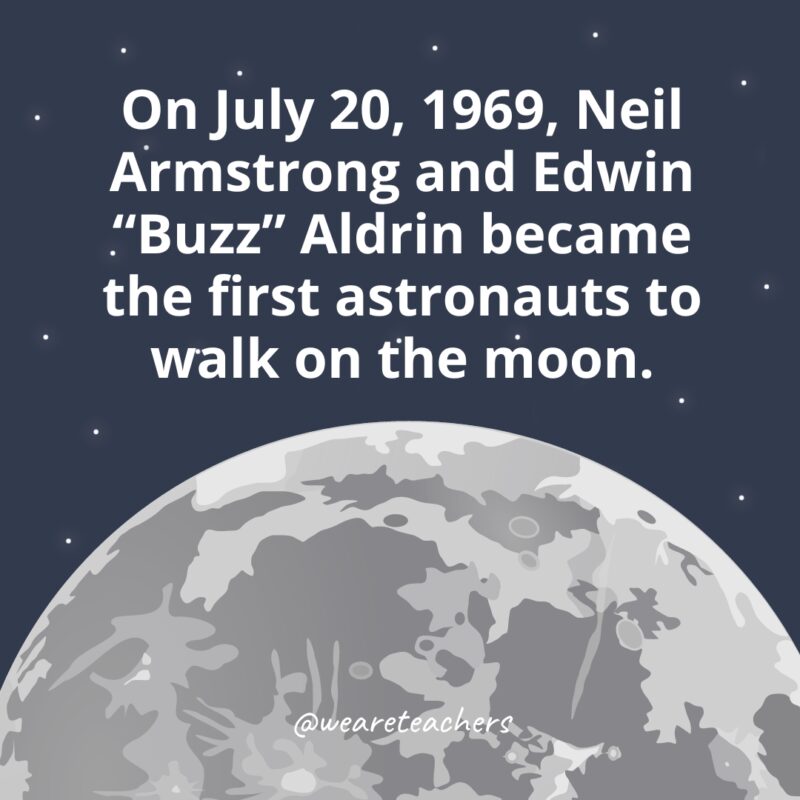
They traveled on the Apollo 11 spaceship, along with astronaut Michael Collins.
Many Native Americans gave every full moon a special name to help them keep track of each month and season.
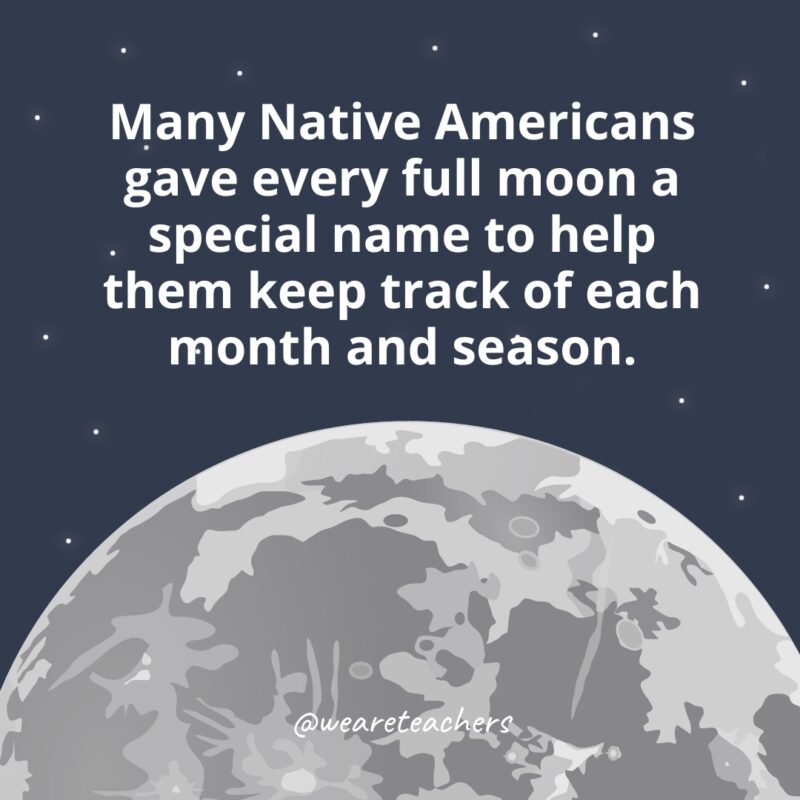
The changes in animals, plants, and weather each month helped them decide on the names.
The Earth always faces the same side of the moon.
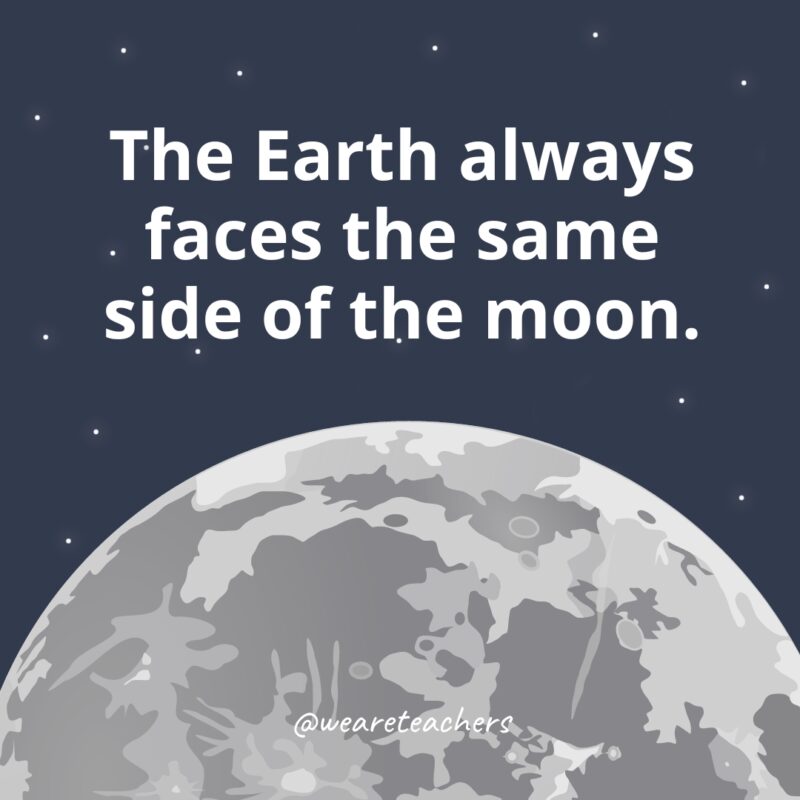
The side facing Earth is the “near side.”
Scientists call the side of the moon we can’t see “the far side.”
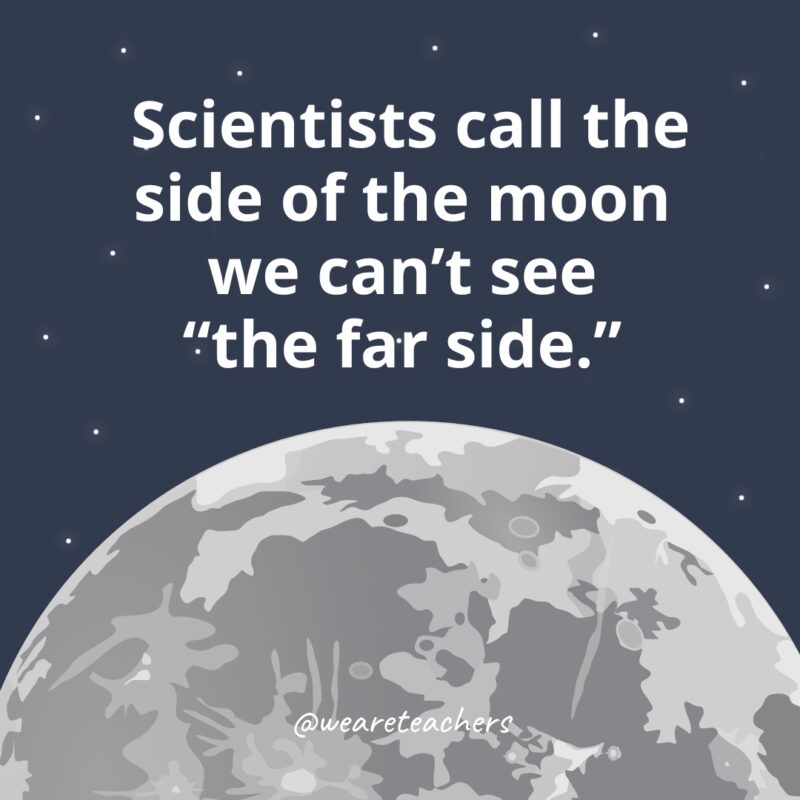
This is what most of us incorrectly refer to as the “dark side of the moon.”
A supermoon looks bigger than usual because it is 17,000 miles closer to Earth than usual.
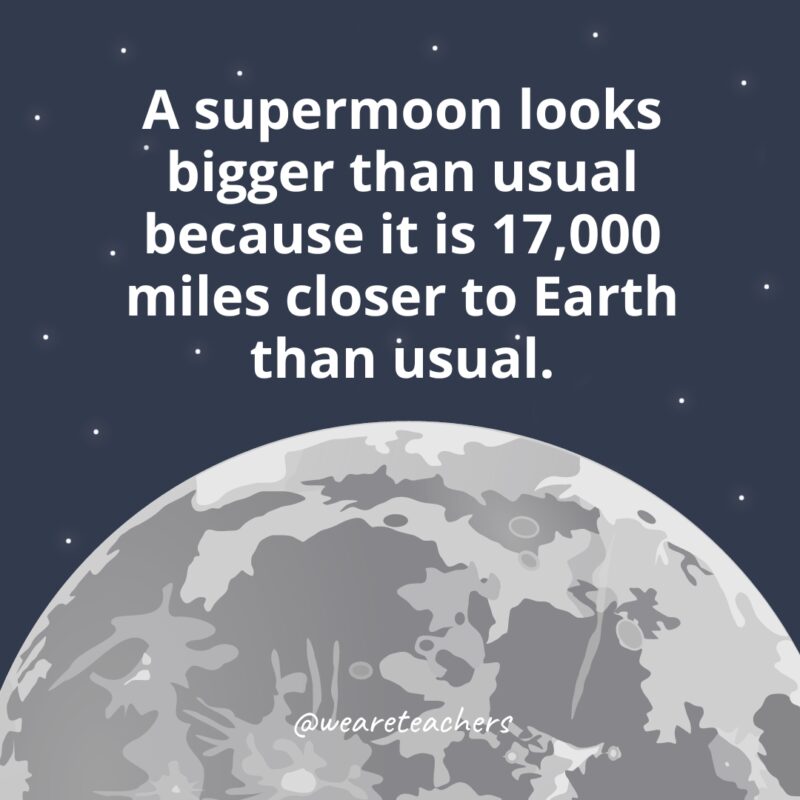
This makes it appear 14% larger and 30% brighter in the sky, even though the size actually never changes!
A blue moon refers to a full moon that occurs twice in one month.
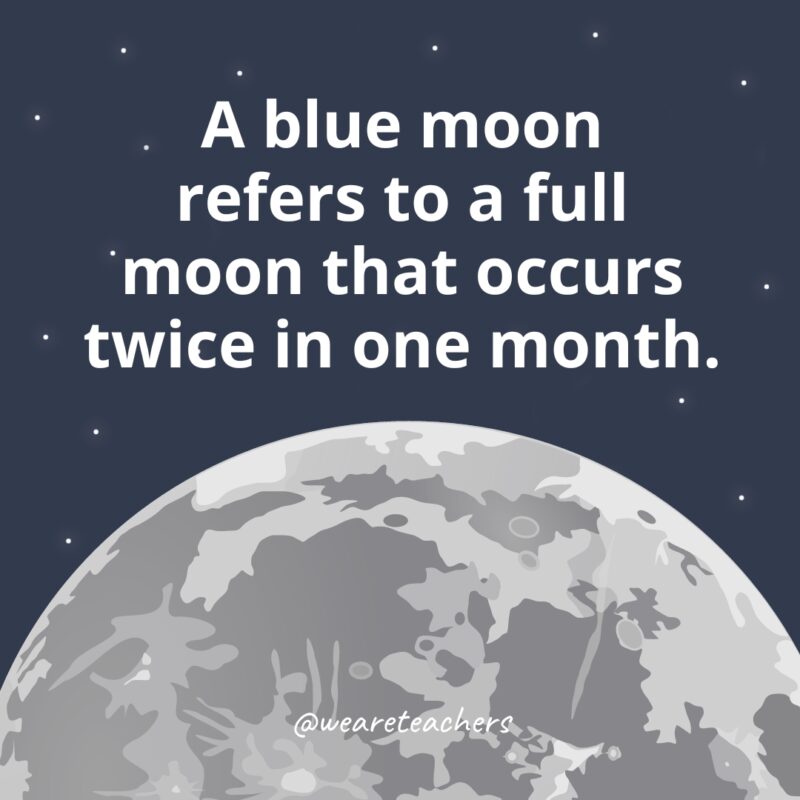
This happens once every two to three years. The moon does not really appear in the sky as the color blue!
A pink moon isn’t really pink.
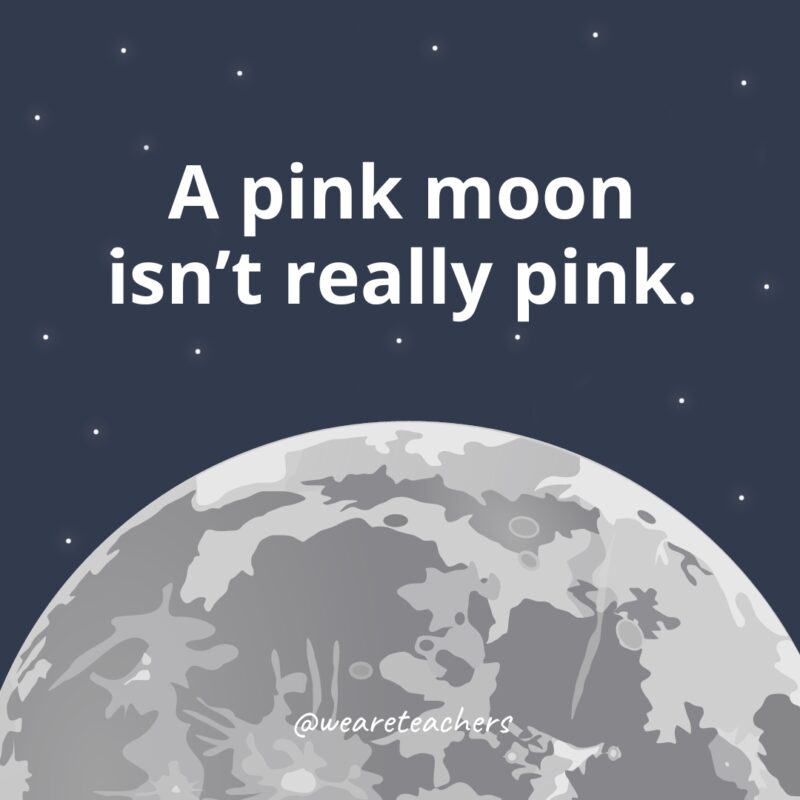
Although that would be super cool! The pink moon is the first full moon of the spring season, named after the moss pink wildflowers that bloom at this time.
Many famous songs were inspired by the moon.
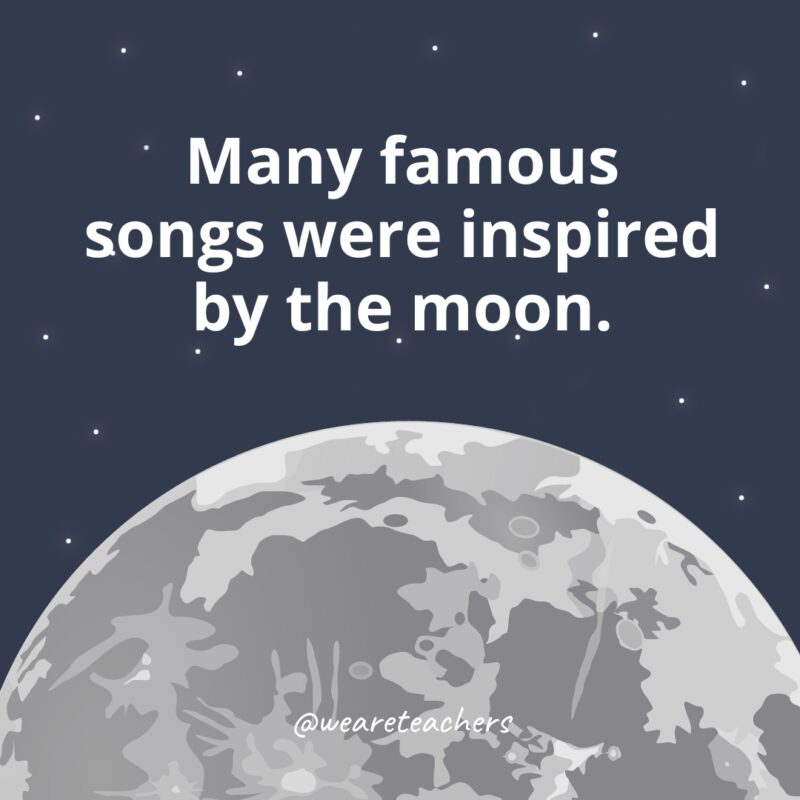
Some of our favorites include Man on the Moon (REM), Halfway to the Moon (Phish), Standing on the Moon (Grateful Dead), Harvest Moon (Neil Young), The Very Moon (Disco Biscuits), Moondance (Van Morrison), Walking on the Moon (The Police), Shame On the Moon (Bob Seeger), and Pink Moon (Nick Drake).
Many well-known rock albums were named in honor of the moon.
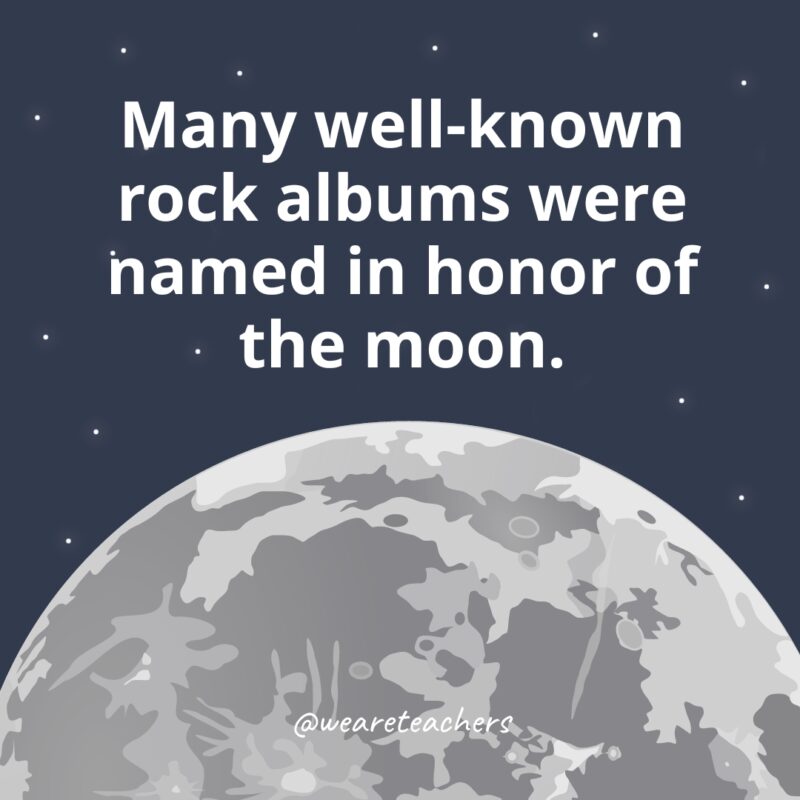
One of the most famous rock albums of all time is Dark Side of the Moon by Pink Floyd. Tom Petty’s first solo album is called Full Moon Fever. The aforementioned “moon songs” by Neil Young, Van Morrison, and Nick Drake are also the titles of those corresponding albums. Rock on!
Werewolves, vampires, witches, and other creepy creatures are associated with the full moon.
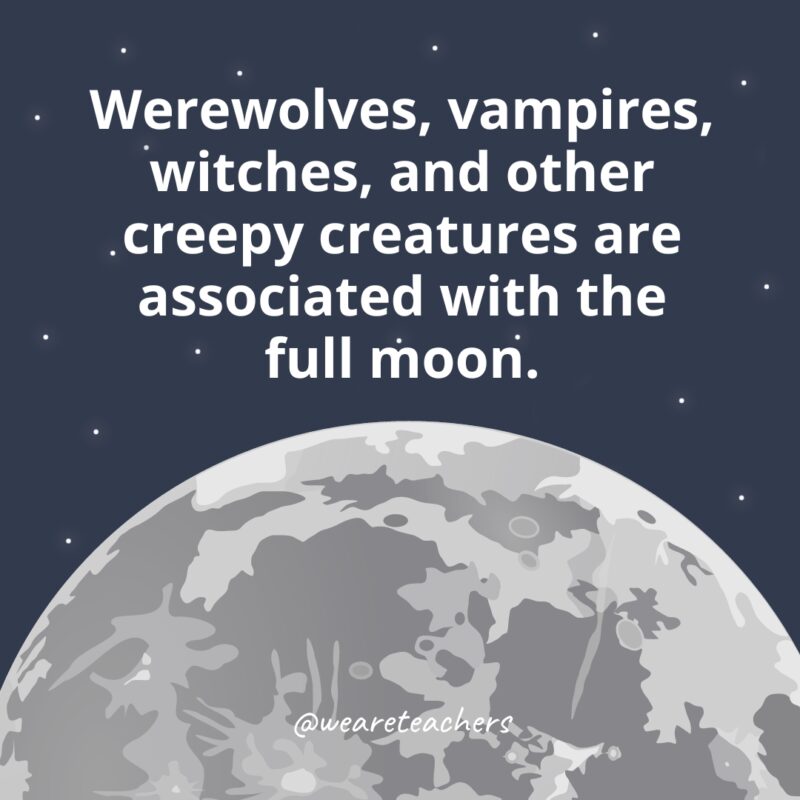
While they are just make-believe, it leads to some very spooky tales. Boo!
Want to learn more about the moon? See our list of 20 Fascinating Children’s Books About the Moon.
Also check out these 20 Brilliant Facts About the Sun for Kids.
Want more articles like this? Be sure to subscribe to our newsletters!
